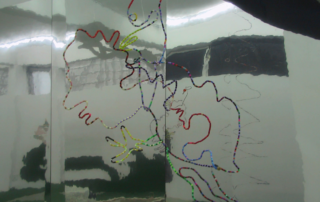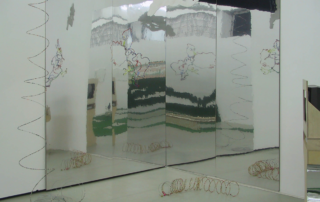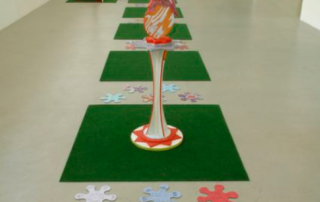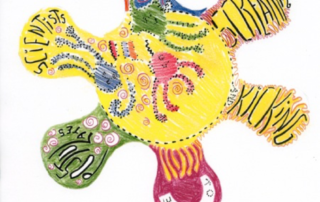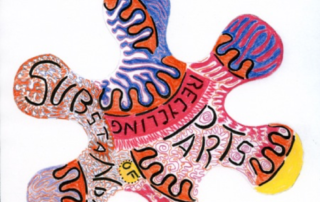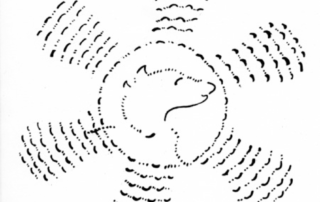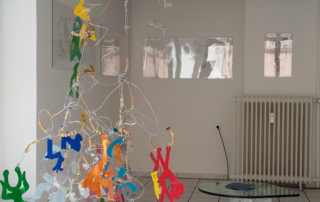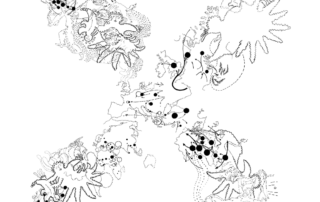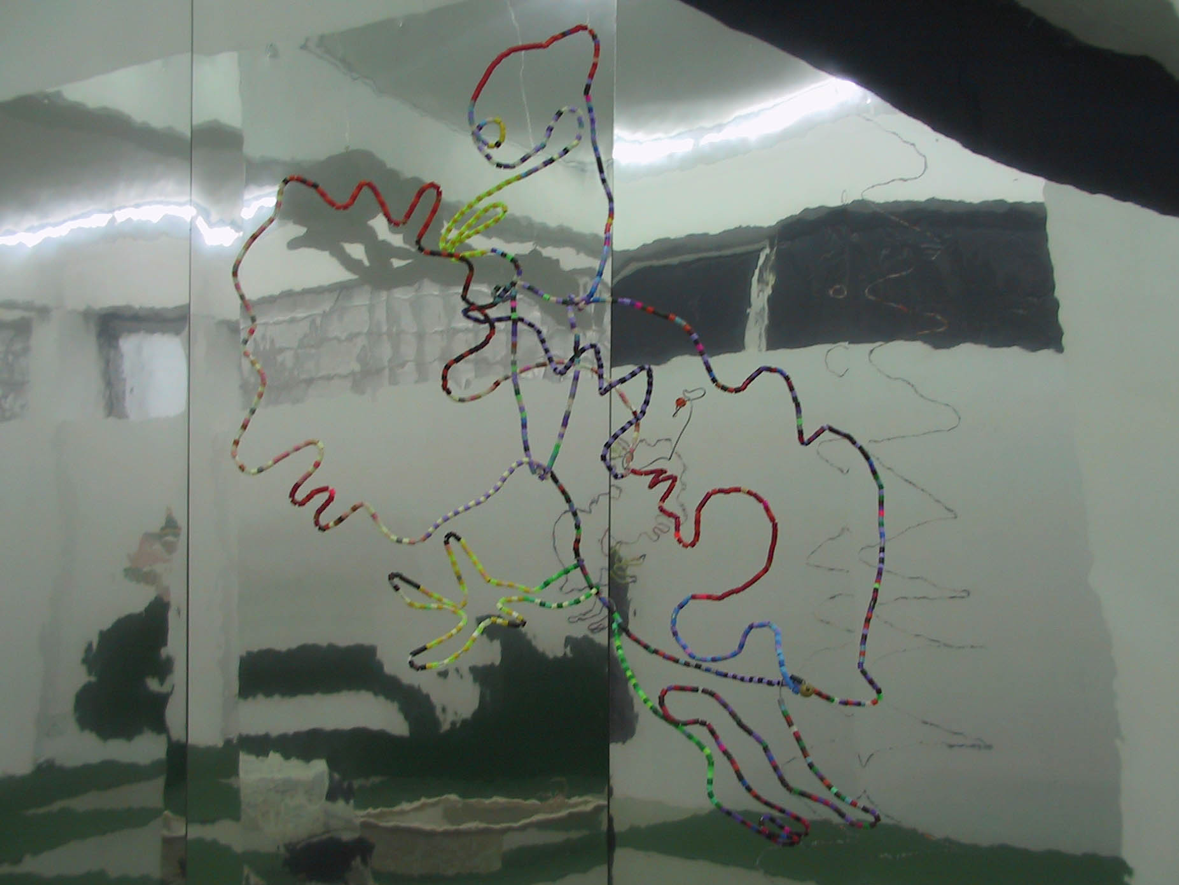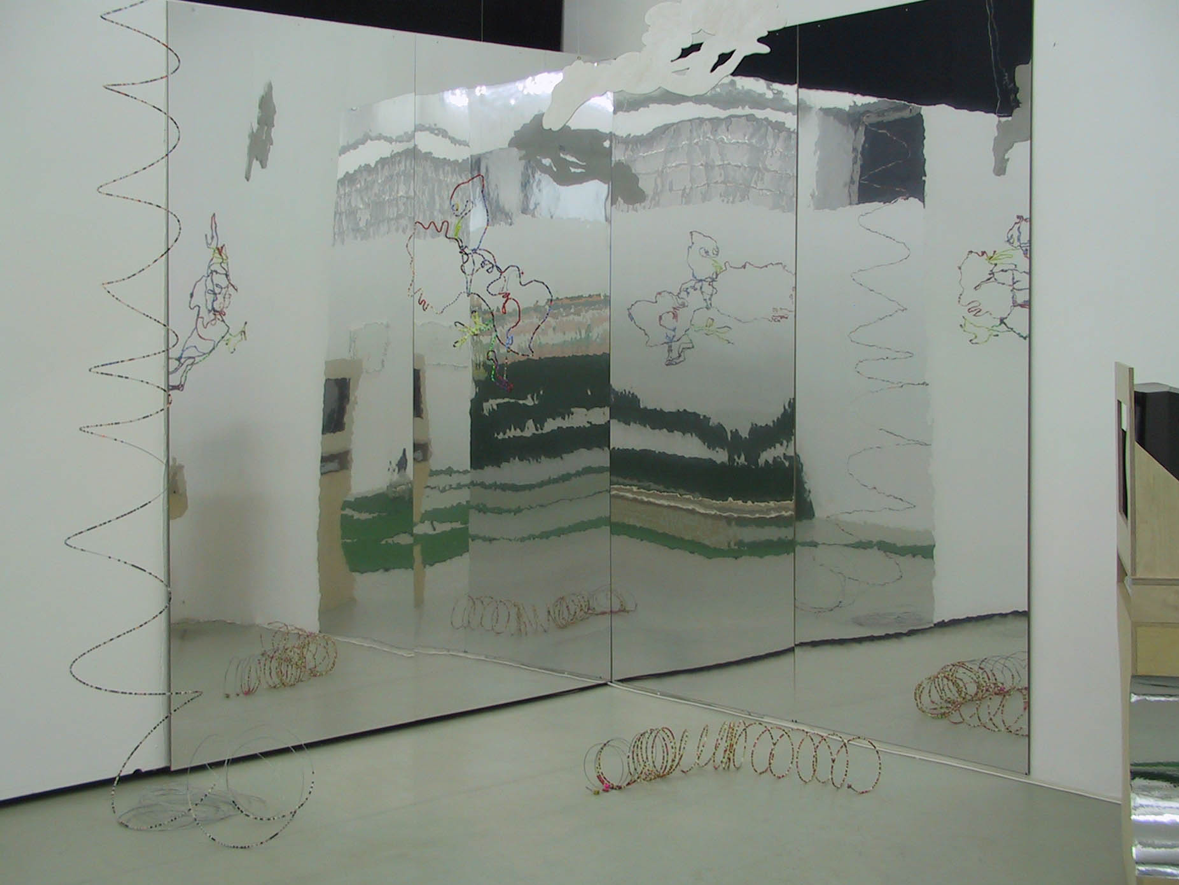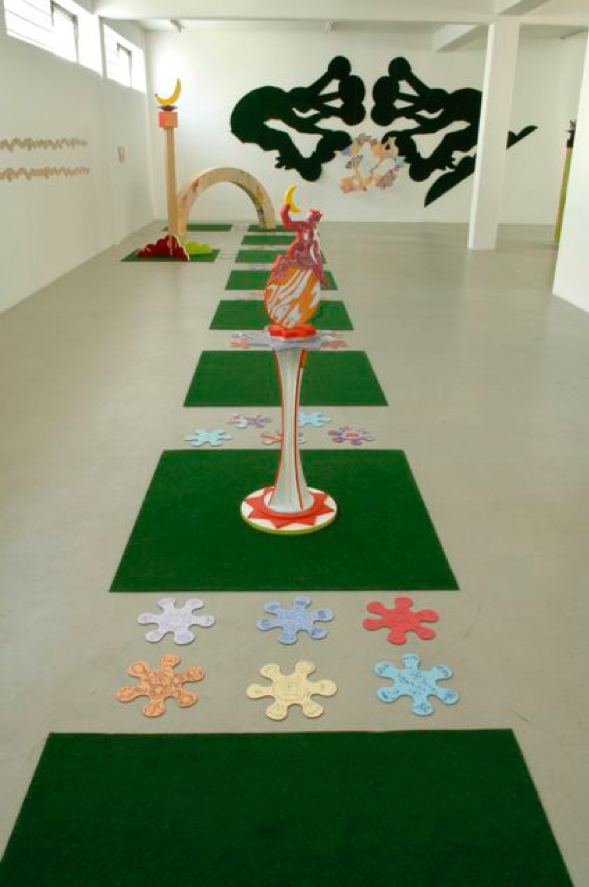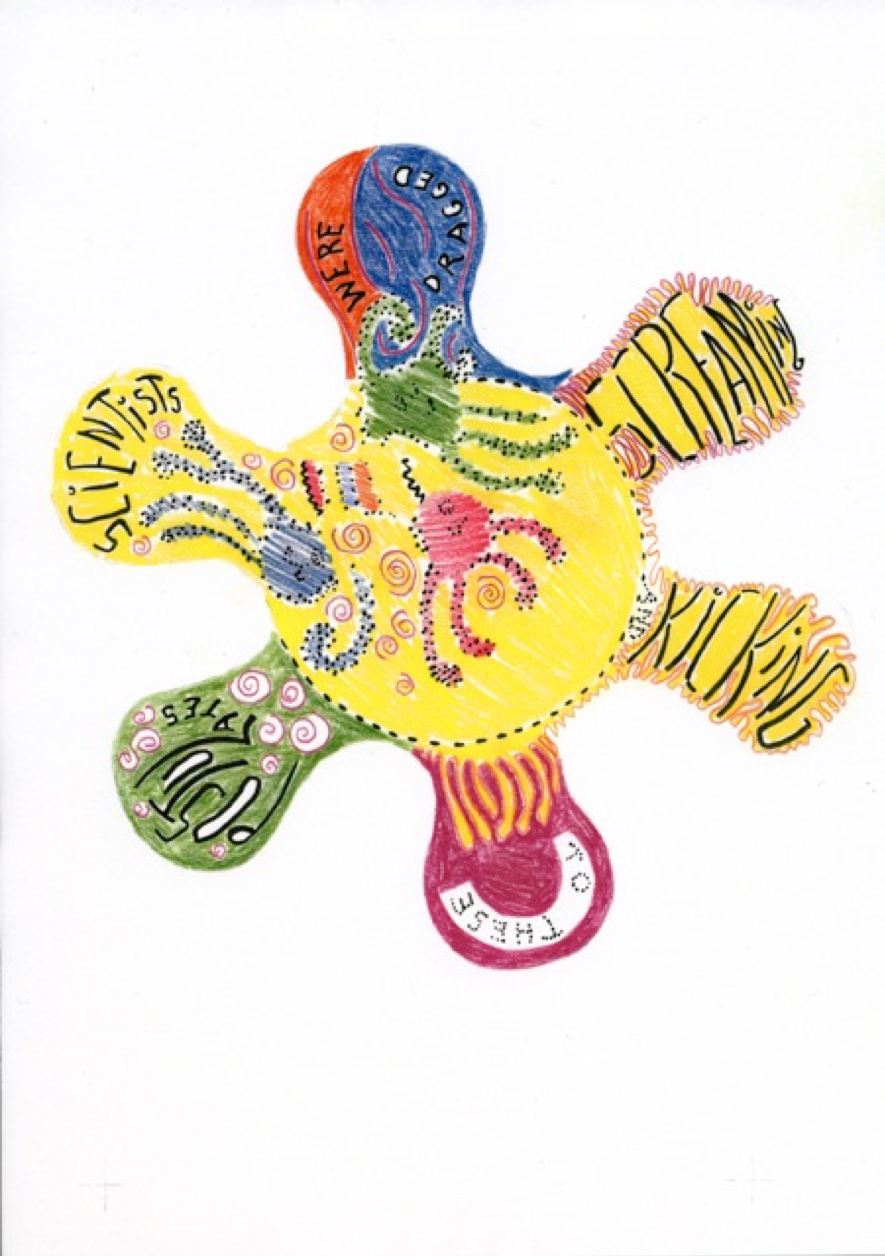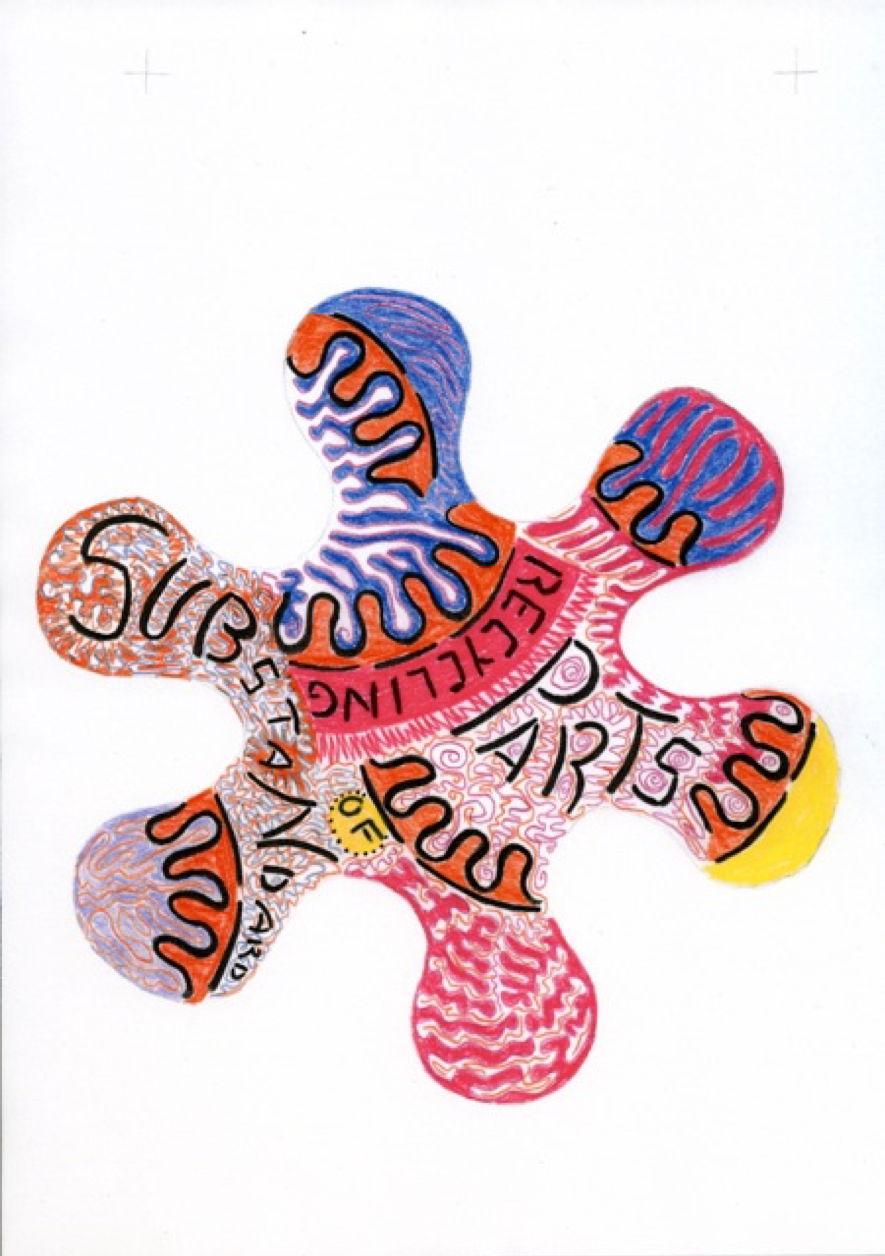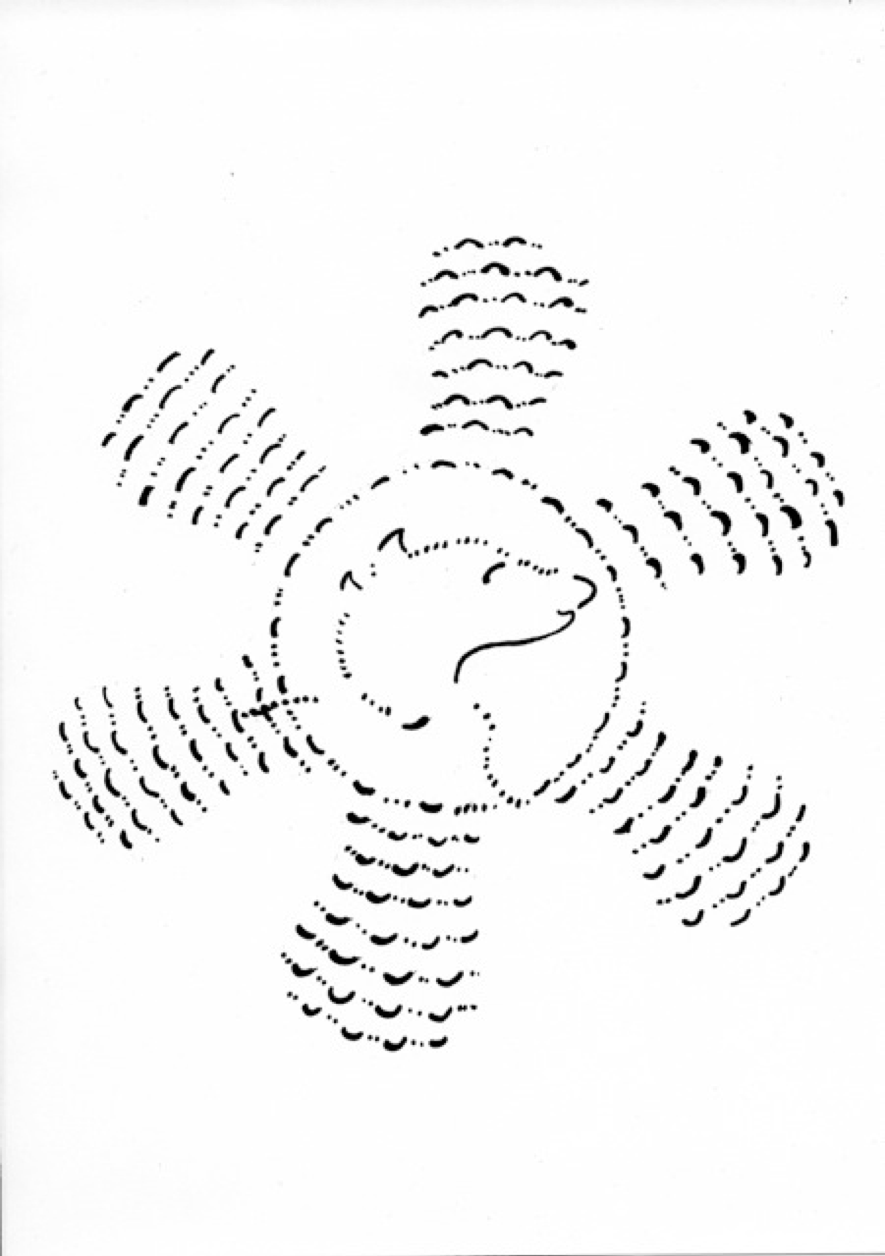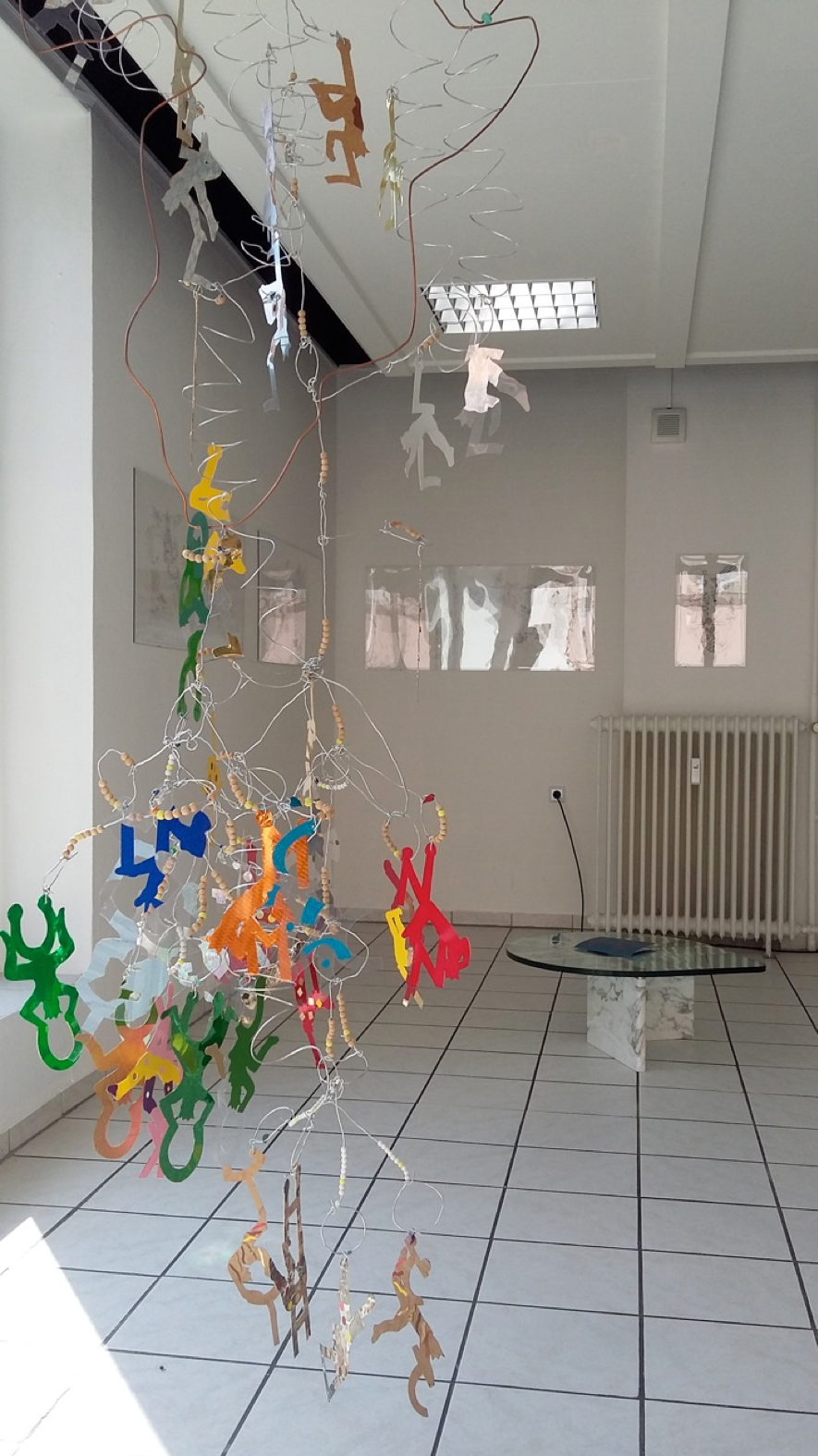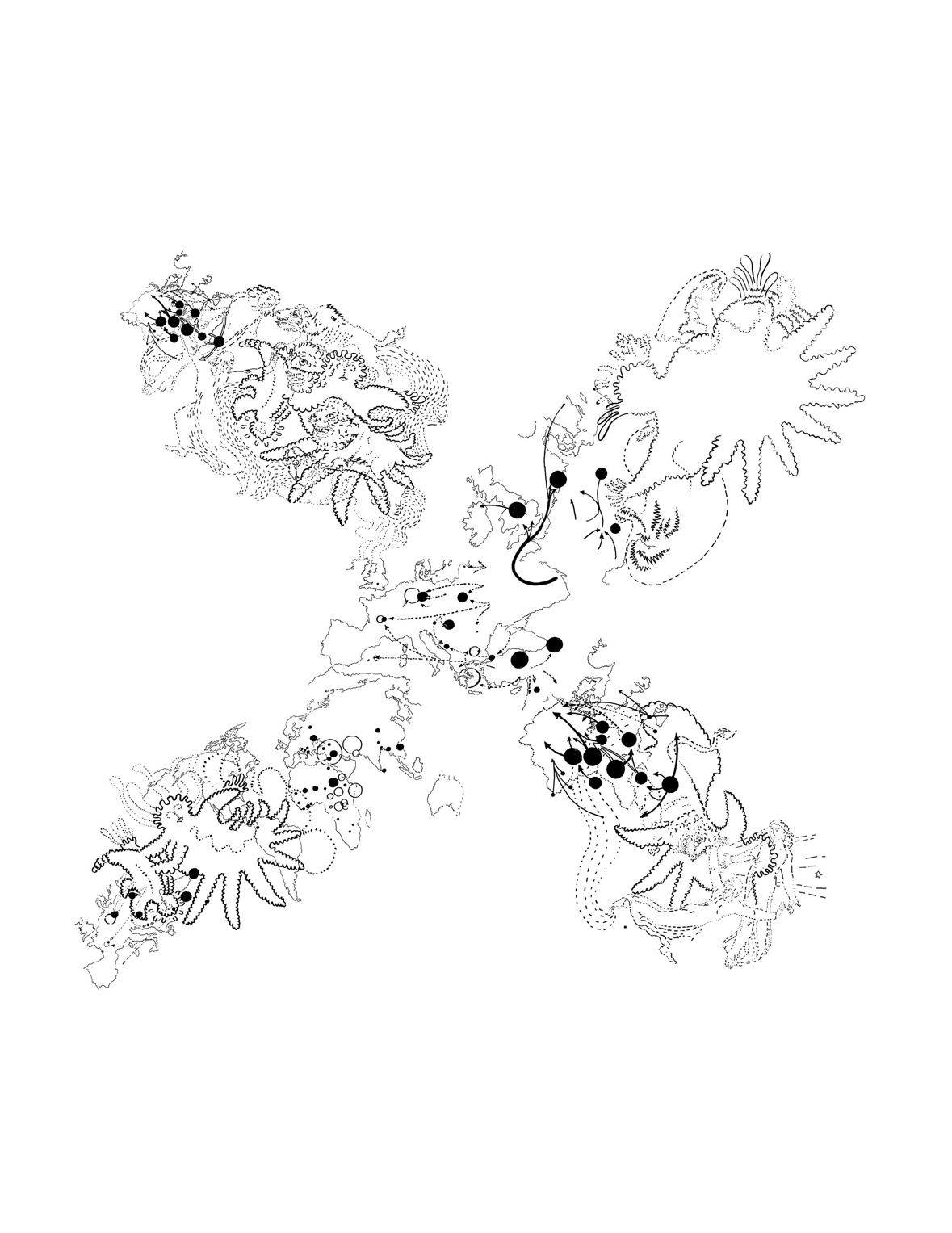art and science works
The imagery of science reflects the aesthetics of the times, according to Martin Kemp (Visualizations, 2001) and Caroline A. Jones & Peter Galison Picturing Science, Producing Art 1998. These two books in particular have encouraged me to make new versions of scientific diagrams and models in a playful but informed manner. Why not extend my vision to benefit from phenomena only scientists can ‘see’ through their instruments (camera, microscope, telescope) and the hypotheses that develop out of this data collection? Engaging with science has led me to experiment with a variety of media. The information content of all physical phenomena is represented in my drawings by dots and dashes and by series of units of slightly different hues in my works with beads and wire. Topographies of the brain and the body are suggested by cut-outs in wood or artificial grass.
gallery
Picus, 2005
70 x 55 x 13 cm
wire and beads
This king being turned into a woodpecker by the witch Circe as told by Ovid in his Metamorphoses Book 14 could also be a model of an organic molecule.
hung from the ceiling: Me and my dog, 2006
45 x 85 cm
acrylic on wood
rear: What’s the Matter with Anti-Matter,2007
Corner-Reflector-Installation, mirror foil
„Von der Physik erfährt Alice, dass die Zeit der Antimaterie auch rückwärts läuft. Alice sieht sich selbst nie im Spiegel, sondern steigt durch ihn hindurch. Die spiegelverkehrte Abbildung ist eine Metapher für Datenübertragung und steht insofern für die Möglichkeiten und Schwierigkeiten von Kommunikationswegen und Transformationen überhaupt – aktuelle Herausforderungen für Wissenschaftler. In der Ecke sehen wir eine Installation mit dem Titel „What’s the Matter with Anti-Matter“. In dem Spiegelglas über Eck wird alles doppelt reflektiert, nicht nur die hängende Perlenskulptur vom Specht aus Ovids Metamorphosen, sondern auch anderen Elemente der Ausstellung und auch wir, als ob wir uns in der Form von Materie so wie Antimaterie sehen würden.“
Felciity Lunn, Rede zur Ausstellung „Alice im Spiegelland“ L6 Freiburg, 2007
Pawn: Alice, 2006
On chessboard artificial grass squares: Pawn: Alice, 2006
143 x 45 x 45 cm painted wood sculpture
rear: Alice in Brainland, 2005 with Brain Dance, 2006
665 x 285 cm artificial grass cut-out
120 x 150 cm acrylic on wood
midfield: Banana-Tower, 1998
245 x 90 x 90 cm acrylic on wood
Im Spiegelland will Alice die Welt gängiger Asymmetrien in Wissenschaft und Kunst auf den Kopf stellen, um die Grenzen zwischen Wissen und Nicht-Wissen, Wahrheit und Spekulationen genauer zeichnen zu können. Hier am Anfang bewegt sich Alice in Gestalt einer Schachfigur durch das Schachbrett aus Lewis Carroll’s Spiegelland, die das Rad des Schicksals darstellt, eine Andeutung dafür, dass Alice in die Zukunft sehen kann. Als Kontrast vertritt die Skulptur „Banana-Turm“, ein so genannter „Persönlicher Wolkenkratzer“ von Celia Brown, die Bodenständigkeit der Gegenwart. Die Bäche, worüber Alice von einem Feld zum nächsten springen muss, um Königin zu werden – also Wissen zu erlangen – bestehen aus bemalten wissenschaftliche Fussnoten, die, thematisch, die Reihenfolge der aktuellen Vortragsreihe über die sechs Dinge widerspiegeln: Gehirn, Daten, Mitochondrien, Wölfe, Physik und die Seele als ein Vogel.
Felciity Lunn, Rede zur Ausstellung „Alice im Spiegelland“ L6 Freiburg, 2007
“Scientists were dragged screaming and kicking to these hypotheses”, 2007
quote from physicist Todd Huffman
28 x 29 x 4 cm
digital print on aluminum composit sheet, laser cut-out
The shape of these “footnotes” corresponds to the stars in Lewis Carroll’s text marking the points where Alice jumps over a brook. Their indented shape reminds me of the undulating form of the mitochondria’s inner wall which offers maximum space for energy production.
“Recycling of Sub-standard Parts”, 2007
quote from mitochondrial geneticist Joanna Poulton
28 x 29 x 4 cm
digital print on aluminum composit sheet, laser cut-out
digital wolf, 2007
28 x 29 x 4 cm
digital print on aluminum composite sheet, laser cut-out
Out of Africa and beyond, 2010
255 x 80 x 80
hanging object, wire, beads, laminate sheets, acrylic
A scientific research project (Bryan Sykes, Oxford 2001) identified 33 related populations of the human species, each bearing a random mutation that took ca. 10,000 years to become established, represented in my art work by a letter, a colour and an acrobatic pose. All ‘clans’ trace their genetic heritage from Africa, here a wire map, while the adjoining lines add up to only 100,000 years of evolution, demonstrating how closely related we all are. Yet, whereas most genetic material mixes through marriage, the branches of this tree would normally never meet again as they trace maternal lineages – the genetic changes occurring in the mitochondria, the power houses of the cell, that are passed on to offspring in the cell plasma of women’s ova exclusively. This relative simplicity is what makes the analysis useful as a kind of genetic clock. Genetic engineering could feed information back into the neighbour-joining tree and inspired me to imagine new spiralling loops of metamorphosis applying to mitochondrial DNA
Odyssee (von den Hugenotten bis zu Gegenwart), 2018
140 x 112,5 cm cm
permanent marker on polyester
Global maps combined with mythological figures, graphic migration data, territorial shifts and apparitions that arise while drawing. I see the impact as an essentially visual contribution to the change in global awareness necessary to meet the challenge of migration, and cultural diversity.
Das Bild zeigt in schematischer Darstellung in Verbindung mit fragmentarischen Landkarten die Flüchtlingsströme in den zwei Weltkriegen, die der Hugenotten und die von heute. Meine imaginären Begleitwesen können freundlich oder feindlich sein. Mich interessiert dabei die problematische Visualisierung des Gesamtbildes der Welt von heute: konkret und emotional.
